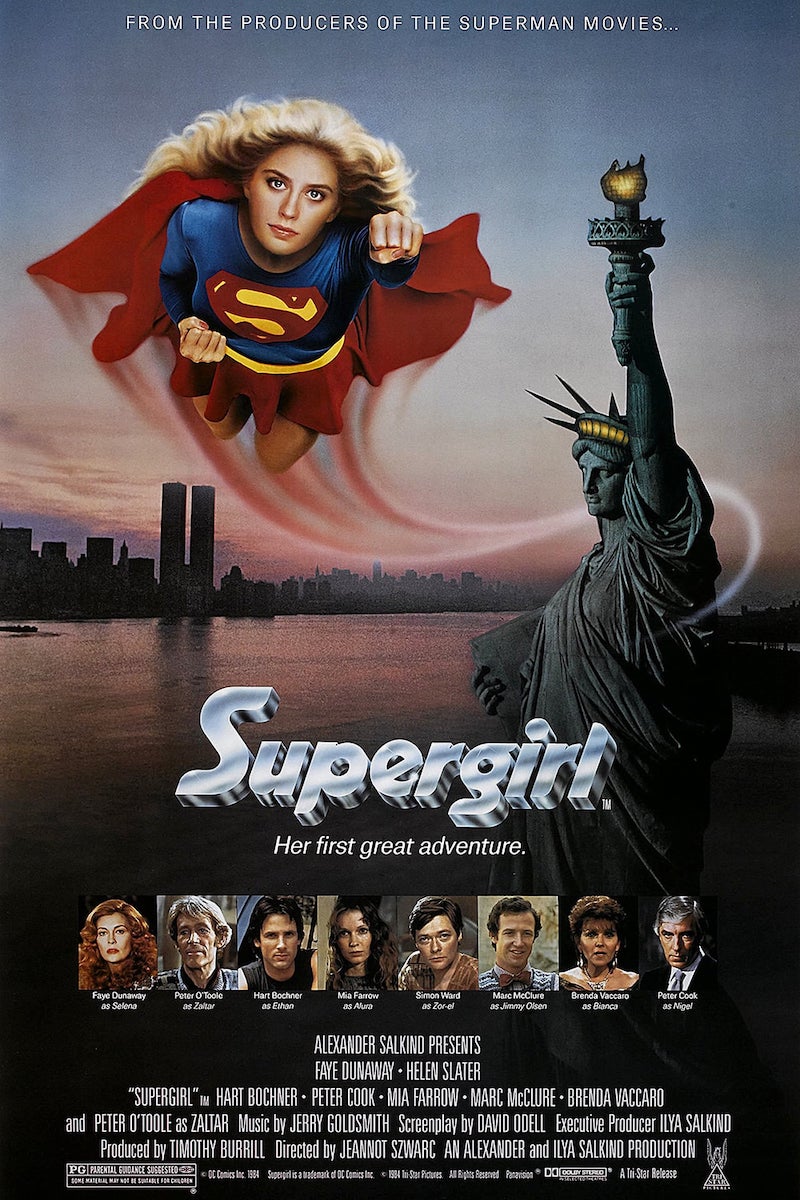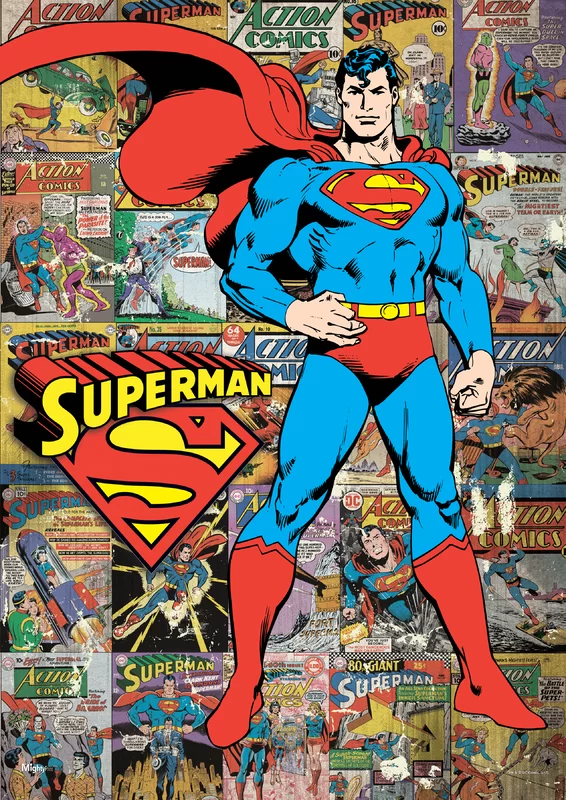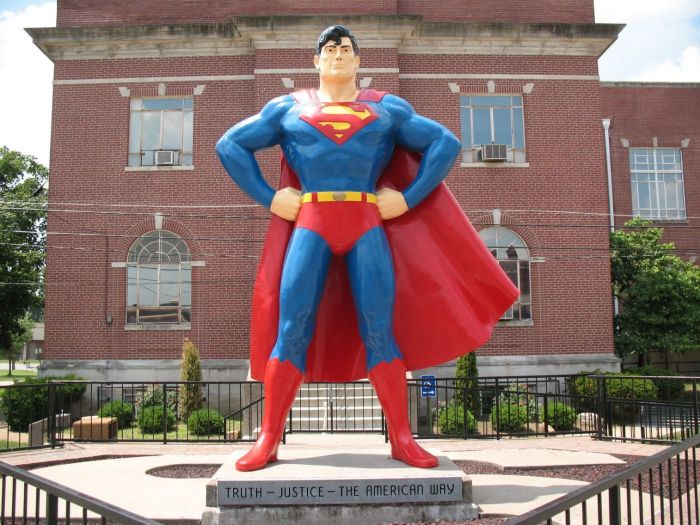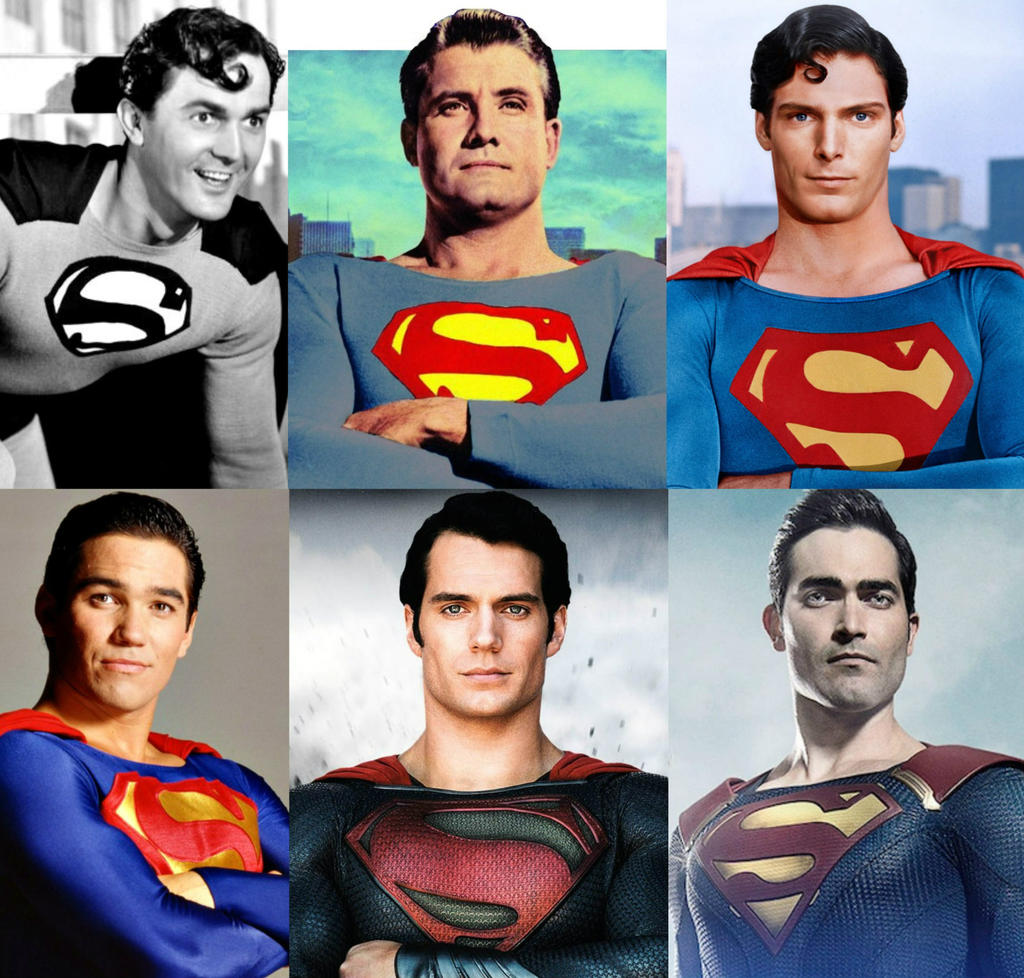
|
|
Supergirl

Argo City, a fragment of the planet Krypton, has been thrown clear from the planet's destruction and survives in the Sixth Dimension. There Superman's cousin Kara is shown by her teacher Zaltar how to use the city's omegahedron power source to help inspire her art. But an insect she animates causes chaos and accidentally sucks the omegahedron down a warp vortex. The omegahedron emerges out of a lake on Earth and falls into the hands of the second-rate witch Selena who suddenly finds she can do great wonders with it. Kara steals an experimental spaceship and goes to retrieve the omegahedrom. On Earth she becomes Supergirl, as well as creating the secret identity of Linda Lee to sign in as a pupil at a girl's boarding school. Selena develops lust for the handsome school gardener Ethan and spikes his beer with a potion that will make him fall for the first woman he sees. But when Supergirl becomes the unintentional recipient of that gaze, she and Selena come into conflict.
The character of Superman's cousin Kara/Linda Lee Danvers first appeared in Action Comics #252 in 1959. Although she went through many different incarnations over the years, Supergirl proved a popular figure where DC were able in essence to repackage Superman for teenage girls. In the comic-book origin story Argo City has been thrown clear of the explosion of Krypton and exists drifting through space under a dome until it is endangered by a Kryptonite meteor shower, during which Supergirl's father is able to send her to safety on Earth via rocketship. The character was killed off in 1985 with Crisis on Infinte Earths, DC's reshuffling of their universe.
The script here, from David Odell, who also wrote the quite good fantasy The Dark Crystal (1982) and the silly Masters of the Universe (1987) and the directed the flop Martians Go Home (1990), is an incoherent mishmash. Part of this may have resulted from director Jeannot Szwarc's original print of 138 minutes being cut down to 105 minutes just prior to general release (something that has been restored in the DVD release). Even so it is incoherent chop suey where not much makes sense. All the comic-book origin has been thrown out and Argo City has, without any explanation, ended up in the Sixth Dimension, which for some reason appears to be located at the bottom of a lake on Earth. There is no explanation of how it managed to survive the destruction of Krypton. There are gaping holes all over the place - there's no explanation offered of how Supergirl gets her costume, it just suddenly appears on her in the space pod. The comic-book origin could easily have been retained and would have made much more coherent and better dramatic sense. With silly bits like the introduction of the Omegahedron, you keep wondering such things as - if Supergirl has to get back with the omeagahedron before Argo is destroyed, why does she dawdle about signing into a boarding school and even engaging in a romance ?
The director for this entry was Jeannot Szwarc - who had previously made the brazenly commercial success Jaws 2 (1978), the romantic time-travel fantasy Somewhere in Time (1980), and subsequently went onto direct an even bigger flop for the Salkinds' with Santa Claus - The Movie (1985). It's a film where nobody involved on the production side is taking it seriously or has any respect for the material, rather they are just looking down on it as kid's stuff. Of all the grand villains that inhabit the Superman universe - Brainiac, Darkseid, Metallo, Mr Mxyzptlk, heck even Bizarro Superman - all the Salkinds came up with when left to their own devices was Richard Pryor doing lame comic schtick as a computer hacker in Superman III and here Faye Dunaway as a campy witch fighting with Supergirl over a love potion-addled hunky gardener.
The disinterest extends to almost all levels. The sets for Argo City look like a styrofoam beehive. The effects are surely the flattest and least involving of any seven figure sf film to be made in the post-Star Wars (1977) boom, with visible wires and grainy matte lines everywhere. [Although these would be outdone by the shabbiness of the effects in the subsequent non-Salkind Superman film, Cannon's Superman IV: The Quest for Peace (1987)]. The one moment where the film and Szwarc displays any imagination at all is the single moment where Supergirl discovers her powers for the first time and indulges in a graceful display of aerial aerobics in a forest.
The worst part though is the horrendous overacting. The mutual hammings of Peter Cook and Brenda Vaccaro, both riding about Dunaway's lair on a toy train at one point, surely make this a career low point for either. But the worst offender is Faye Dunaway. Her camping of it up as far beyond the end of the hilt as she can, becomes fascinating to watch in its terribleness. Only a seasoned trooper like Peter O'Toole, himself frequently guilty of considerable hamming, acquits himself with honour.
The part of Supergirl was cast with an 18-year-old ingenue Helen Slater after a much publicized worldwide casting call by the Salkinds. They were clearly hoping to transform an unknown into a star as they had with Christopher Reeve in the Superman role and Slater was even signed to a multi-picture deal. Alas with the film's flop, Slater only went onto a middling career afterwards in films like The Legend of Billie Jean (1986), Ruthless People (1986) and The Secret of My Success (1987). Slater does okay in the part here, although perhaps has too much a willowy winsome naivete to fully exude the stature the role requires.




